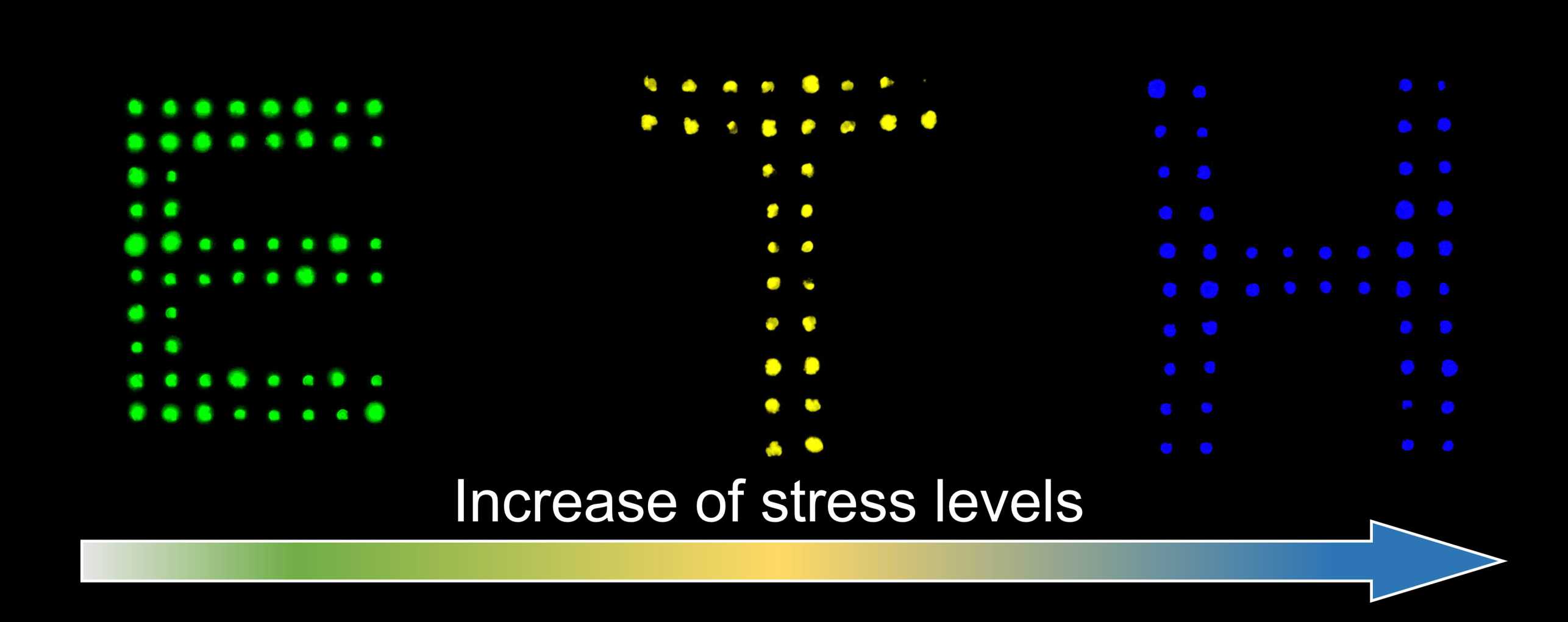Research team led by the Laboratory for Soft Materials and Interfaces have created microcapsule arrays that can simultaneously record the different history of stress levels by changing color. This technology enables monitoring microscale damage and pressure in materials.

Predicting material failure is a significant challenge in materials science, as stress history often leaves no visible signs. To address this, researchers at ETH Zurich's Laboratory for Soft Materials and Interfaces , Multi-Scale Robotics Lab , and Institute of Pharmaceutical Sciences have developed a smart self-reporting material. This material uses fluorescent microcapsule arrays that light up to record different microscopic stresses, transforming how we monitor mechanical events and offering new insights into material mechanics.
In brief, the researchers created dye-filled microcapsules that burst at specific stress levels via microfluidic synthesis. These microcapsules are organized into regularly spaced arrays embedded in silicone films, which can then be attached to other materials. Upon indentation, the arrays reveal variations in local stresses with sub-millimetric precision.
These self-reporting materials can identify and record multiple stress levels, making them valuable in fields such as materials science, biomedicine, robotics, and engineering. By detecting stress levels that could lead to material failure, they enhance safety and durability. Additionally, this technology is highly versatile. Microcapsules can be loaded with substances like drugs or healing agents, enabling materials to not only detect damage but also respond by releasing treatments when needed. This research, led by Dr. Hu and Prof. Isa, was partially funded by the Swiss National Science Foundation and has been published in Advanced Materials.
M. Hu, Z. Ma, M. Kim, D. Kim, S. Ye, S. Pané, Y. Bao, R. W. Style, L. Isa, Self-Reporting Multiple Microscopic Stresses Through Tunable Microcapsule Arrays. Adv. Mater. (2024). external page DOI:10.1002/adma.202410945






